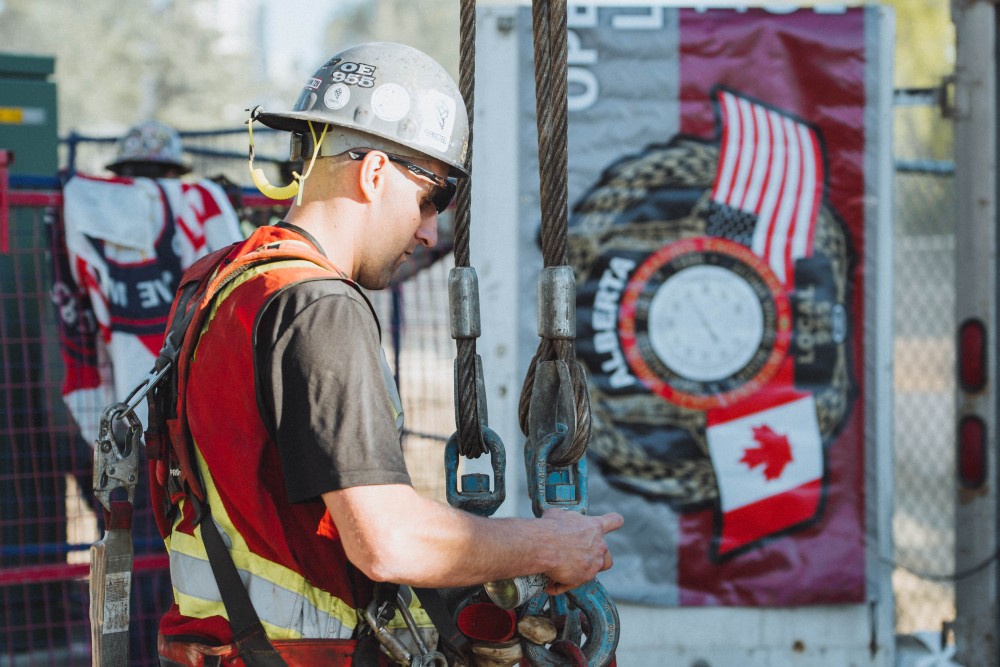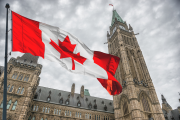The passage of Bill C-50, the Canadian Sustainable Jobs Act, was celebrated by labour organizations and environmental organizations. The Act contains many essential provisions to help Canada thrive in a future in which demand for zero-emission energy sources grow, oil demand starts to decline, and economies shift to align with cost-effective, net-zero strategies.
Now that the Act has received Royal Assent, the Government of Canada will be busy establishing and appointing members to the Sustainable Jobs Secretariat and Partnership Council. Then it’s time to get to work on Canada’s first-ever Sustainable Jobs Plan, which, under the legislation, must be ready by December 31, 2025.
The impetus for all this activity is the need for Canada to be prepared for an energy transition that—make no mistake— is already underway. In the past, similar economic disruptions, such as the phase-out of coal in Alberta or the depletion of the cod fisheries in Atlantic Canada, hurt many communities and workers because governments didn’t have proactive plans in place to invest in and support the people most affected. Canada can ill afford to get it wrong this time around. What’s more, when we get it right, this country has the workforce and innovation necessary to thrive in a net-zero economy.
What exactly is a net-zero economy? It is an economy that continues to deliver goods and services, and a high quality of life, while powered by emissions-free energy. Aligned with Canada’s climate change commitments, this means climate policy and economic policy come together so that we follow those pathways most likely to help us achieve net-zero emissions by 2050 in a manner that prioritizes emissions reductions over removals.
The Sustainable Jobs Action Plan must be developed with provincial and territorial governments, Indigenous communities, industry, non-profits, postsecondary institutions—as well as equity-deserving groups, who have often been excluded from emerging economic opportunities. The plan must outline how Canada will create sustainable jobs and support workers in the shift to net-zero, as well as provide a summary of data and labour market information used to develop the action plans. The first plan will cover five years—taking us up to 2030, a critical milestone in the journey to net-zero by 2050.
Based on work that we at the Pembina Institute conducted with the Canadian Labour Congress for our Sustainable Jobs Blueprint series, we suggest prioritizing four key action areas that build off commitments the government has already made.
Focus area 1: Data for sound decision making
- The government of Canada has already committed to efforts that will improve labour market data in the 2023 interim Sustainable Jobs Plan. The Sustainable Jobs Action Plans under the Act must include a summary of the data for economic growth and the labour market in a net-zero economy that was used in the development of the plan and identify gaps. It will then be up to governments to help start filling these gaps
- Workers, unions, employers, and decision makers need more accessible labour market information that helps them make the choices necessary to plan for future opportunities in the workforce and economy, namely, the skillsets and occupations that will be in demand along the path to net-zero.
Focus area 2: Training and skill building for workers
- Our modelling shows that 72,000 workers per year will require training and re-training support to ensure the workforce is aligned with opportunities in a clean economy. Both funding support for workers, and capacity support for training institutions, are critical to help meet this predicted influx in demand. It is also critical these supports ensure that equity-deserving groups are better represented in the clean economy workforce.
- The federal government has announced its intention to undergo consultation on a Youth Climate Corps in 2024. This program would support youth in taking up jobs that help address climate change and help them build skills needed in the years to come.
Focus area 3: Regional development and diversification for resilience
- Regions that rely highly on fossil fuels and other high-emitting, trade exposed sectors must be supported by governments in charting new economic pathways and to build resilience in the fabric of their local and economies.
- In the 2030 Emissions Reductions Plan, the federal government reiterated its commitment to establish a Futures Fund for Alberta, Saskatchewan, and Newfoundland and Labrador to support local and regional economic diversification. Consultation, formal program development, and implementation of this fund is needed to make progress.
Focus area 4: Support for growth industries to capitalize on advantages
- Collaboration between federal, provincial, and territorial governments should continue to make way through the Regional Energy and Resource Tables process – to identify growth opportunities and build out and strengthen new and existing supply chains to capitalize on competitive advantages in a clean economy.
- The federal government has also committed to $93 billion worth of clean energy investment tax credits, many of which have labour requirements attached to them, such as payment of a prevailing standard wage and minimum apprenticeship hiring. One of them, the Clean Technology Tax Credit was just formalized through the passage of Bill–C-59. It’s now time to finalize all these tax credits, which will help build out new industries and create good, sustainable jobs for workers.






